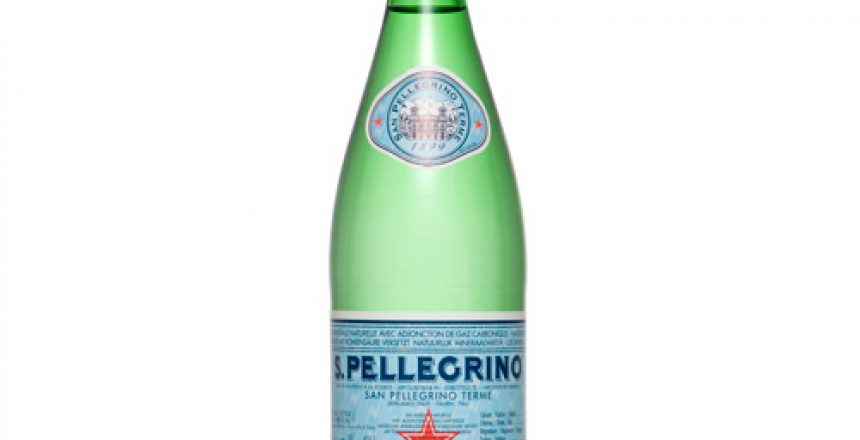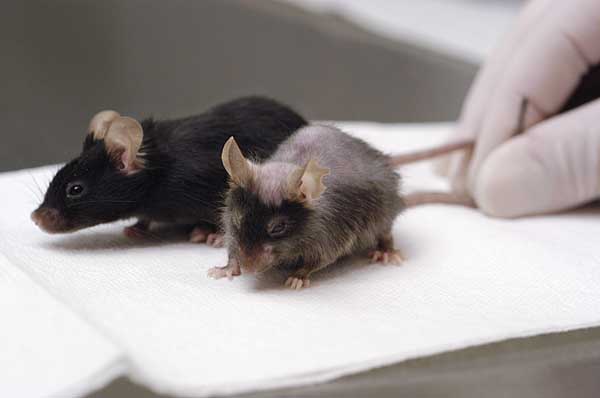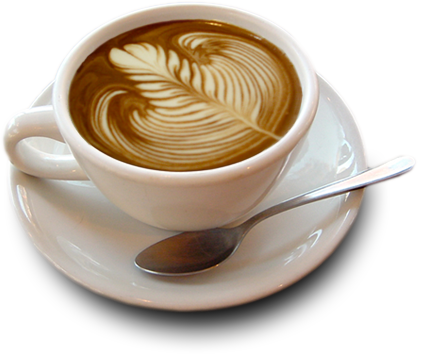Lots of attention has been given to what food is healthy and what isn’t, but less has been given to which drinks are healthy. The list of healthy drinks is surprisingly limited.
Don’t drink calories
If you want to stay lean and healthy, a cardinal rule is don’t drink your calories.
Drinking caloric beverages with a meal, whether the beverage is milk, cola, or orange juice, leads to the consumption of more calories, but with no change in satiety. If you drink calories, it doesn’t seem to subsequently change the amount of food calories you consume.
There’s something about liquid calories that doesn’t register with the normal appetite control system, so if you drink calories, that could put you on the road to weight gain, or stall weight loss.
It’s not just calories either. Most commercial beverages are loaded with sugar. Since they don’t have any fiber, if you consume them alone, they’re going to spike your blood sugar and insulin, always a bad thing.
The rule not to drink calories (or sugar) immediately knocks most commercial drink products off the list.
Healthy drinks
Warning: this is going to be a short list.
Water
If you’re thirsty, drink water.
Thirst is telling you that you need water, and nothing else. It’s not telling you that you need a soda or orange juice or a Starbucks coffee milkshake.
Water has zero calories. When drunk with a meal, it may actually improve satiety by making you feel fuller. It also seems to be the case that we can mistake thirst for hunger, thus quenching thirst may make us less hungry.
There are a number of commercial drinks now that are just sparkling water (plain) or with a bit of flavoring added. These are fine as they have no added sugar. For example, La Croix:

San Pellegrino or other sparkling waters make for a good summer or post-workout thirst quencher.
If you’re thirsty, do not drink Gatorade or similar drinks that are loaded with sugar.
Coffee and tea
If you need an energy boost, drink coffee or tea. Small amounts of cream or half-and-half added are acceptable. Sugar is not.
Coffee and tea are among the most consumed drinks in the world, which is a good thing, because they’re healthy. Consumption of coffee and tea are both associated with lower death rates. They contain phytochemicals that stimulate hormesis, much more than even most fruits and vegetables. When drunk with a meal, they also chelate iron, preventing its absorption. In fact, people in underdeveloped countries consume so much tea and have low dietary iron sources that researchers worry that tea could contribute to iron deficiency anemia. However, that’s not much of a worry for those of us in developed countries; iron overload is more of a concern.
The caffeine in coffee and tea can contribute to anxiety, and in extreme cases, to caffeine psychosis. I’ve known people, night shift workers, who drank coffee continually, maybe a dozen or more cups in 8 hours, and that’s certainly something most people should avoid. However, contrary to folk knowledge, the consumption of caffeine is not linked to risk of atrial fibrillation.
Tea contains other psychoactive compounds besides caffeine, notably theophylline, theobromine, and theanine, and these may have lower effects on anxiety than caffeine. Tea also has a lower caffeine content than coffee, and for these reasons, as well as the seemingly more favorable health profile of tea, I’ve cut way back on coffee consumption and increased my tea consumption lately.
Herbal teas can be toxic. Rule of thumb: if an herbal tea doesn’t use a plant that humans have long experience with, stay away.
If you get coffee from a coffee shop, don’t get those coffees loaded with sugar, syrup, or soy. They’re just milkshakes in disguise.
Red wine
If you drink alcohol, red wine is arguably the healthiest alcoholic beverage. “Arguably”, because data is mixed and much of the data is epidemiological, meaning it can’t show causality.
Also, one to two glasses and not more confers most of the benefit.
Red wine contains polyphenols, much like coffee and tea, that appear to provide much of the health benefit behind the Mediterranean diet.
If you like an occasional cocktail, choose plain highballs or other non-sugared drinks. Beer isn’t a great choice, as beer belly is real, although an occasional beer won’t hurt.
What not to drink
You shouldn’t drink virtually everything else in the way of commercial beverages.
Fruit juice: 12 fluid ounces of orange juice contains about 31 grams of sugar, which isn’t much less than in soda pop. Fruit isn’t even necessarily healthy, and in any case, you should chew your own food.
Commercial drinks that are mostly carbonated water with a bit of fruit flavoring and minimal sugar probably won’t hurt you.
Diet soft drinks may have some downsides.
Every overweight/obese person around seems to constantly have a sugar-sweetened drink of some kind in their hands at all times.
Just because that sugar-loaded drink is made from fruit, or came from Starbucks, does not make it healthy. They lead to weight gain and inability to lose weight, not to mention insulin resistance and heart disease. Not to mention that cancer cells have a voracious appetite for sugar.
I’m probably forgetting a lot of other commercial drinks, since I’m just not attuned to what the masses are doing. If you want to stay lean, muscular, and healthy, you need to avoid what they’re doing.
Conclusion
If you’re thirsty, drink water.
If you need an energy boost, drink coffee or tea.
If you need to relax, drink a glass of red wine. (Moderation is key.)
If you want to stay lean, muscular, and healthy, and live a long time, don’t drink anything else.















23 Comments
Good post. I don’t think you mentioned Energy Drinks (Red Bull, etc), which in my view are probably the worst of the worst. Diet soda may actually be worse for you than the regular heavily-sugared soda, as the artificial sweeteners it contains are toxic, and it still contributes to weight gain on most people, regardless of calorie content – here is a summary of evidence for that: https://www.ncbi.nlm.nih.gov/pmc/articles/PMC2892765/
I do enjoy a glass or two of red wine with dinner – for me, it really enhances my enjoyment of the meal .
Thanks, Rob, agree about energy drinks. As i pointed out, I’m just not in touch with what most people are doing. And they are drinking lots of energy drinks.
One question: V8?
You could do a lot worse, but I think most of the calories in it are carbs, and it contains little protein, so I’m not enthusiastic about it.
Rooibos tea?
Healthy, as far as I know. It’s South African?
Yes. Very relaxing tea.
Do not forget about tap (drinking) water.
Especially, for example, in Western Europe, it’s usually not only the cheapest, but also a pure source of water.
For example, most tap water in Germany has legally meet higher quality standards than, for example, mineral waters. The latter often contain high amounts of uranium (sic), because they sat where the uranium is for millions of years – in the ground.
Also, most food you buy is grown by irrigating with tap water, or prepared with tap water, anyway – so you swallow the tap water if you want it or not, even if it was perhaps not as pure as other sources of water.
In many areas of the world, as I have heard even in the US, tap water is not fit for drinking water. Then you have to buy it, which I personally would experience as a hassle – containers full of water and lug them home.
I’ve always enjoyed tap water having food grade quality – some of the good things one does not even notice until you realize that they are not universal.
There are water filters for tap water – cheaper ones, based on activated charcoal filters, which remove organic pollutants (pesticides, drugs and their metabolites (hormonal contraceptives are almost completely finding their way out of women into the sewage system)) very well, but fail at removing inorganic pollutants.
More expensive filters use reverse osmosis – kind of molecular-sized filtering – which produce the purest water, but are not needed, as long as there are no serious inorganic contaminants in your local tap water.
It’s important for your health that you know of what quality your tap water for drinking has exactly – to know if you can safely use it, or if you need to filter it, and by what filter technology exactly.
Here in Germany water suppliers legally are required to do and provide chemical and microbiological analyses of their tap water to consumers regularly. If you live in parts of the world where this is done differently, I you may think about changing that by coming together with other consumers and then motivate your supply companies to improve on the situation.
Tap water that has food-grade quality is not only cheap, but very comfortable to have.
For tea, I prefer Taiwanese Oolong tea. Oolong is supposed to have the highest polyphenol content, and Taiwan has high quality tea at reasonable prices. Whenever Im in Taipei I pick up 250g bags for ~$10. Heres the place I usually go:
松大茗茶.茶葉.tea
10491, Taiwan, Taipei City, Zhongshan District, 台北市中山區長春路319號
+886 2 2507 9165
How often are you in Taipei? I’d like to see it some time.
Typically once every few months
If you want to drink more green and black tea – make sure you experiment a lot and try many brands and mixes.
Over the years I tried at least 60 different kinds of green and black tea of all “qualities” and prices.
I found that, while technically everything was just the same kind of leaves from the same type of plant,
taste differed extremely – some teas I found to be disgusting, most middle ground, and some I found to have pleasurable taste.
Remarkably I could not find any relationship between price and taste – with the little exception of white tea (that consists of hand-picked, very young leaves) – which is among the more expensive kinds of tea; but the extra of taste is, in my opinion, not worth the extra price.
Also know that you can mix different brands and mixes yourself, to make your custom green tea after your individual preferences – I, for example, prefer a self-made mix of two kinds of rather cheap supermarket-brand green teas, which I found to taste best combined.
There is also reason to experiment with tea concentration, and sweeteners (and their quantity), even sometimes water quality (many say tea tastes best with water that has the fewest iron/calcium/magnesium content, for example – those ions react with tea components, influencing taste) and brewing time.
As for sweeteners, I found the combination of stevia and xylitol worthy of replacing table sugar.
They taste, applied together, most like real sugar to me, and add the benefits of lower calories and being tooth-friendly (xylitol seems to facilitate tooth repair and kills caries-inducing bacteria in the mouth).
If you can get hold of it: Sometimes advertisement companies give out advertisement gifts – for example sets of little bags of one or two dozen different teas. Those are a cheap and easy way to sample different kinds of tea to see what tastes best.
Personal note:
I tried my own first tea after observing the Star Trek character Picard on TV again and again drinking Earl Grey when I was a teenager. I found it tasting terrible, and almost threw the (rather expensive) bag almost in the garbage. But after a few days I came to want to try it again – and found the taste suddenly much more likable.
My hypothesis for this phenomenon: We humans have some kind of metabolic sense, that can somehow determine – subconsciously – what is healthy and what not; it does not work perfectly, but it works rather reliably. When humans are low in certain nutrients, minerals or vitamins – they tend to desire quite exactly the kind of food that, after previous, subconscious learning, provides the needed nutrients.
This “metabolic sense” can be observed in most obvious ways in pregnant women:
The fetus grows not at a steady rate, but in growth spurts; when those happen, the female’s body is suddenly drained of certain nutrients in a short amount of time, depleting her reserves; women then often instinctively react with a desire to binge eat – of notoriously untypical food combinations, for example peanuts with fish or even more weird ones; sometimes even feel irresistible urges to eat soil or other non-food substances:
https://en.wikipedia.org/wiki/Pica_(disorder)
Fascinatingly, I read a study that showed that African women who gave in their urges to eat soil had a better pregnancy outcome and higher child survival rates.
(This is not the study, I cannot find it at the moment, just an article of many about this topic)
https://www.aboutuganda.com/uganda/health/eating-soil-pregnant
(ADDENDUM)
https://en.wikipedia.org/wiki/Geophagia
General observations on tea:
Most of the stuff you get in tea bags stateside is the small leftover tea debris as opposed to whole tea leaves.
Chinese and diaspora Chinese prefer to drink whole leaf tea, and Ive found it to taste much better. Its less bitter and has a fragrant aroma.
For hot tea the brewing method is as follows:
– brew one pot of tea for 30 seconds, pour this batch down the drain. This is to rinse and open the leaves.
– brew the same batch of leaves and let sit for 2-3 minutes. Any longer will be more bitter.
– Repeat the last step up to 7x. However, taste and polyphenol content diminishes rapidly with each batch. Ive heard that all the polyphenols are extracted in the first 10 minutes of immersion in hot water.
You can also brew tea leaves at room temperature for 2-3 hours, or cold brew in the refrigerator for 8 hours.
How about a cup of whole milk with 2 teaspoons of cocoa?
Cocoa is very healthy too. https://www.medicinehunter.com/cocoa
Hi Vlad – cocoa is indeed healthy, but I’d go easy on the milk. I make cocoa in water and add just a dash of cream. Milk is high in lactose (a sugar).
Hi
I tried bulletproof cocoa (with a chunk of butter instead of cream) but didn’t like it so much. If I’m not mistaken, lactose doesn’t contain fructose (which according to some, like Dr. Lustig is the ‘toxic’ part of sugar because it’s metabolized like alcohol). Furthermore, milk has protein and the bodybuilders in the golden age (1940s and 50s) used to drink a lot of it.
Yes, that’s true, there no fructose in milk. Lactose is disaccharide consisting of a glucose and a galactose molecule linked. In any case, the sugar in milk is relatively small, especially if you drink only small amounts. And it does have protein, true. For me personally, milk reliably causes acne, and this seems to be due not to sugar (alone) but to the combination nutrients in milk which raise IGF-1. Milk also pretty reliably causes weight gain if done to excess; that’s what it’s for, to feed an infant animal (cow or human) and make it grow. All that is why I prefer to consume fermented dairy rather than milk: cheese, yogurt, butter, cream.
Hello, and what about lemomade?
Lemonade*
No, lemonade is loaded with sugar.
I mean squeezing lemon and mixing with water?
100g of lemon has 2.5g according to google
I’ve read that it helps stomach ingestion, as it’s alkane in the body.
I’ve found out about your site a couple of days before and started reading about everything for hours 🙂
Thank you very much for sharing all that with us.
Sincelery,
Djordje
Hi Djorje, thanks. Lemon water like that is fine.